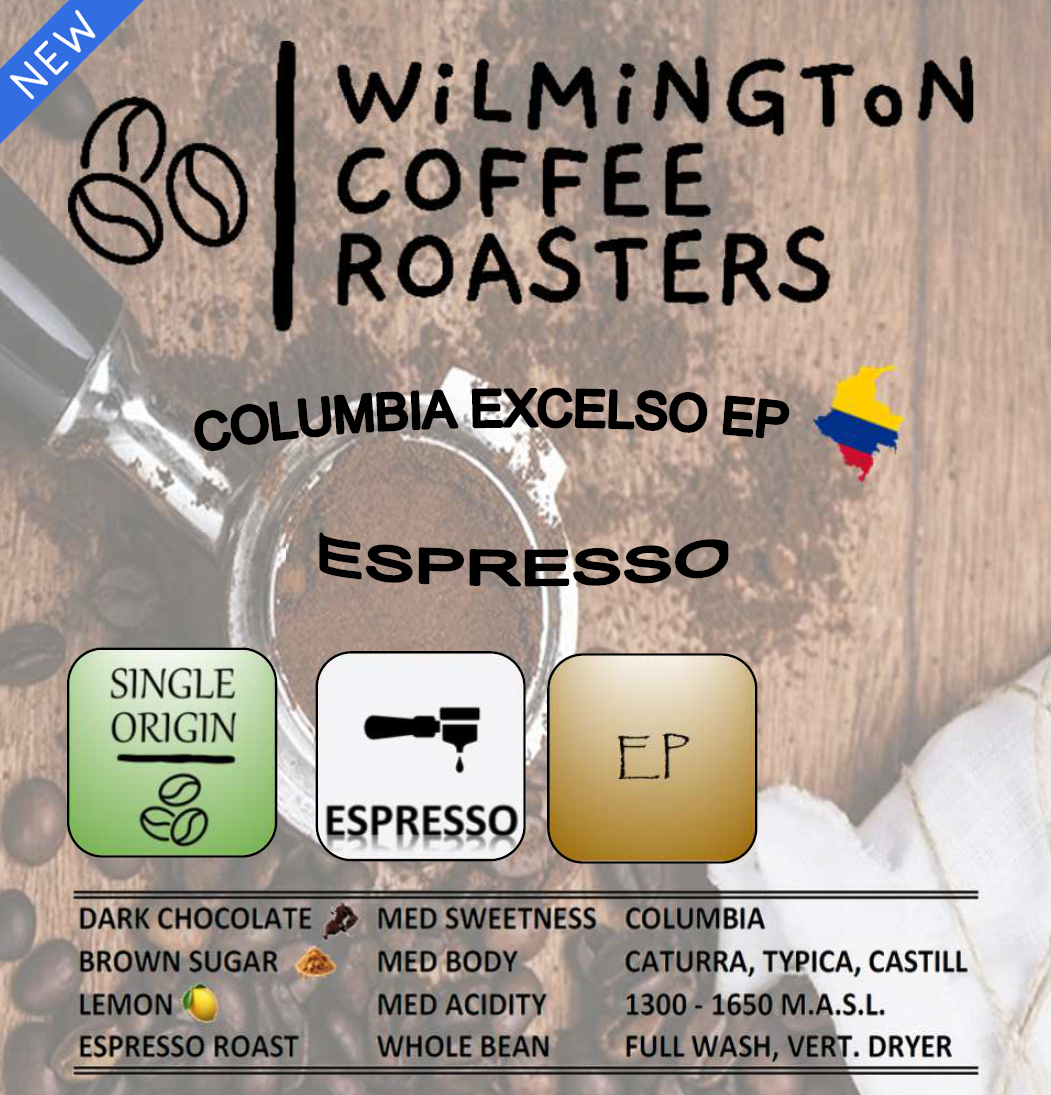
COLUMBIA EXCELSO EP - Espresso
Whole Bean
$19.99
Tasting Notes | |
Dark Chocolate | Medium Acidity |
Brown Sugar | Medium Body |
Lemon | Medium Sweetness |
Demographic | |
Origin: | Columbia |
Producer: | Various Small Producers |
Processing: | Fully Washed, Vertical Dryers |
Altitude: | 1300m - 1650m |
Species: | Caturra, Colombia, Typica, Castillo |
Harvest | October - January |
Type: | Espresso |
About This Coffee:
Colombia Excelso comes from small family-owned farms in the Colombian “coffee triangle.” The main harvest is between October and January, and the “mitaca” harvest is between April and June. Small coffee producers pick and process their coffee at their own micro-wet mills and then dry their own coffee, typically on elevated tables inside solar dryers that provide protection from the rain.
History of Coffee in Columbia:
Coffee production in Colombia has a reputation for producing mild, well-balanced coffee beans. Colombia's average annual coffee production of 11.5 million bags is the third total highest in the world, after Brazil and Vietnam, though highest in terms of the arabica bean. The beans are exported to United States, Germany, France, Japan, and Italy. Most coffee is grown in the Colombian coffee growing axis region, while other regions focus on quality instead of volumes, such as Sierra Nevada de Santa Marta. In 2007, the European Union granted Colombian coffee a protected designation of origin status. In 2011, UNESCO declared the "Coffee Cultural Landscape" of Colombia, a World Heritage site.
The coffee plant had spread to Colombia by 1790. The oldest written testimony of the presence of coffee in Colombia is attributed to a Jesuit priest, José Gumilla. In his book The Orinoco Illustrated (1730), he registered the presence of coffee in the mission of Saint Teresa of Tabajé, near where the Meta river empties into the Orinoco. Further testimony comes from the archbishop-viceroy Caballero y Gongora (1787) who registered the presence of the crop in the north east of the country near Giron (Santander) and Muzo (Boyaca) in a report that he provided to the Spanish authorities.
Growing Coffee in Brazil:
The first coffee crops were planted in the eastern part of the country. In 1808 the first commercial production was registered with 100 green coffee bags (60 kg each) that were exported from the port of Cucuta, near the border with Venezuela. A priest named Francisco Romero is attributed to have been very influential in the propagation of the crop in the northeast region of the country. After hearing the confession of the parishioners of the town of Salazar de la Palmas, he required as penance the cultivation of coffee. Coffee became established in the departments of Santander and North Santander, Cundinamarca, Antioquia, and the historic region of Caldas.
